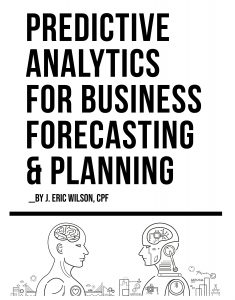As we integrate artificial intelligence (AI) and machine learning (ML) into our demand planning processes, I am sure that we will see improvement in our ability to anticipate demand rather than react to it. However, accurate forecasting is only one element in an effective supply chain. So, while I am very much in favor of making good use of these new tools, I have some reservations about their impact on improved demand planning.
My concerns fall into five categories:
- The nature of algorithms
- Algorithms don’t execute
- Gaming and overrides trump algorithms
- Forecasts as proxies for success
- Implementing advanced algorithms may initially make things worse
- Implementing advanced algorithms may reveal significant supply chain inefficiencies
1. The Nature of Algorithms
Algorithms are models of reality, and all models fall short of representing reality with perfect accuracy. Understanding a model’s limitations is key to its proper use. Certainly, AI and ML algorithms will allow us to better model potential demand, but we will also need to be aware of their limitations.
“all models fall short of representing reality with perfect accuracy”
Bad data, incorrect or biased interpretations of the data, and ignoring data that does not agree with corporate direction remain significant risks in any planning process. Adding reliable processes to validate both the data itself as well as any interpretations of the data will improve the effectiveness of these advanced algorithms.
2. Algorithms Don’t Execute
Poor supply chain execution will undermine any algorithm, no matter how accurate it is. Relying on improved algorithms alone will not improve a supply chain that is riddled with ineffective practices and siloed teams. In fact, more accurate modeling may reveal just how detrimental these poor practices are. An accurate forecast that correctly anticipates future demand will be worthless if the product can’t be produced and shipped in time to meet the demand.
And a more detailed view of future customer behavior will be worthless if the company cannot focus the necessary resources on planning the development, production and shipment of products that satisfy the customers’ expectations. Adding performance metrics to key supply chain processes will allow for discovery of potential constraints. And setting up processes to address these constraints as they appear will allow for continuous improvement throughout the supply chain.
3. Gaming and Overrides Trump Algorithms
A reliable algorithm that no one trusts will be of little value to a company. When individuals or teams believe that their view of the future is more accurate than a system’s predictions, and they are allowed to game or override the algorithm, most if not all of the value of the algorithm is lost. In my experience, most companies have a significant number of S&OP team members who distrust the systems they use to plan.
“A reliable algorithm that no one trusts will be of little value to a company”
Unless this is addressed, this underlying lack of confidence in any system will severely limit any algorithm’s impact on improving forecast performance. Overrides should be documented and validated by product performance and gaming should be clearly discouraged and called out when it does occur.
4. Forecasts as Proxies for Success
In applying AI and ML algorithms to our business, we need to ask what our true goal is. Is it really a more accurate forecast? Or is it a more robust and agile process for responding to customer demand? It is possible to improve forecast accuracy without also improving service levels and on-time delivery.
Forecast accuracy is only a proxy for improved business performance. Without an effective supply chain to support more accurate forecasting, much of the value that an advanced algorithm might add may be lost. An excessive focus on improving forecast accuracy may draw attention and resources away from other constraints that are actually causing larger problems.
5. Implementing Advanced Algorithms May Reveal Significant Supply Chain Inefficiencies
There is no guarantee that implementing advanced forecasting algorithms will improve business performance. A more accurate forecast may reveal that the company can’t actually respond quickly as market and customer preferences change.
It may also show that more resources will be needed to support the execution of a more accurate forecasting process. In the long run these are useful lessons that the company can use to address constraints to improve the entire supply chain to take advantage of more accurate forecasting. So the expectation needs to be that these advanced models will be part of a continuous improvement process that will require all the links of the supply chain to become more effective by addressing constraints as they are discovered.
6. Stepping Back to Step Forward
The success of any supply chain is dependent, in large part, on the people in it understanding their roles and executing effectively. As AI and ML models are more integrated into the demand planning process, the key practices of good communication, ongoing training, executive support and continuous improvement will also need to be supported. Without these basic practices, the value of improved forecast accuracy may be limited.
By themselves these new algorithms will only show us what is possible. It will be up to each member of the S&OP teams to make sure that the possible consistently becomes reality through consistent execution guided by reliable performance metrics.
 To find about more about practical applications of machine learning models, pick up a copy of Eric Wilson’s new book, Predictive Analytics For Business Forecasting & Planning. Written in easy-to-understand language, it breaks down how machine learning and predictive analytics can be applied in your organization to improve forecast accuracy and gain unprecedented insight. Get your copy.
To find about more about practical applications of machine learning models, pick up a copy of Eric Wilson’s new book, Predictive Analytics For Business Forecasting & Planning. Written in easy-to-understand language, it breaks down how machine learning and predictive analytics can be applied in your organization to improve forecast accuracy and gain unprecedented insight. Get your copy.

